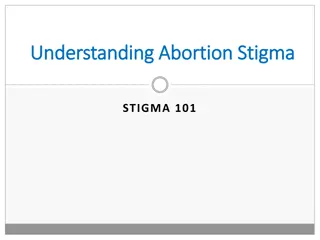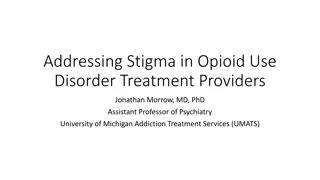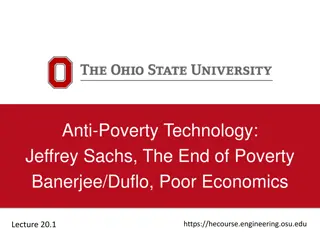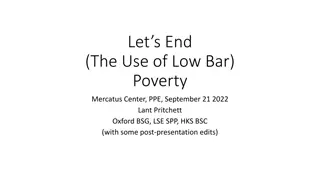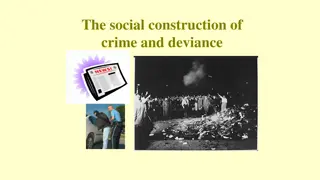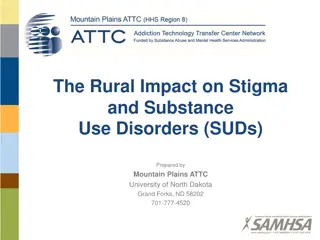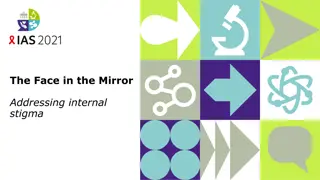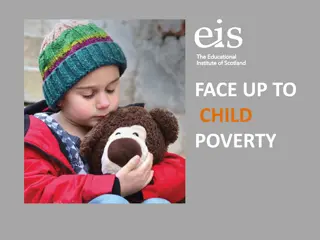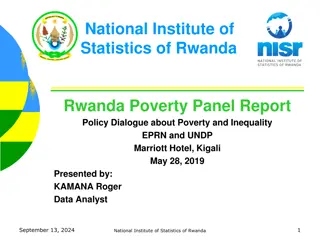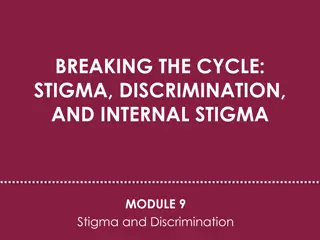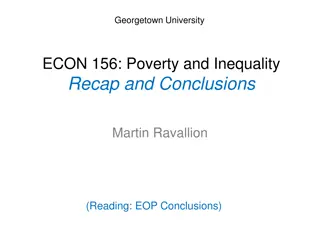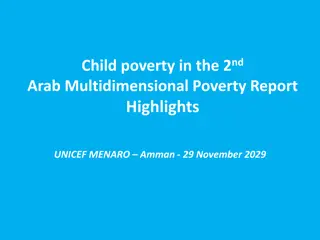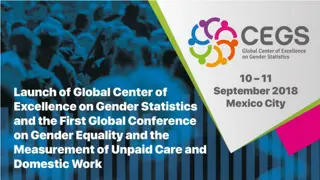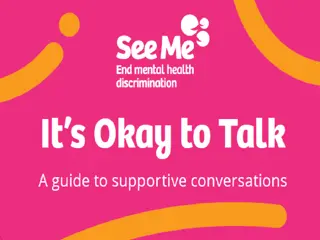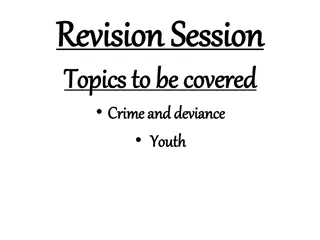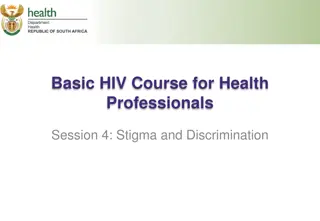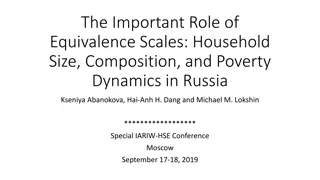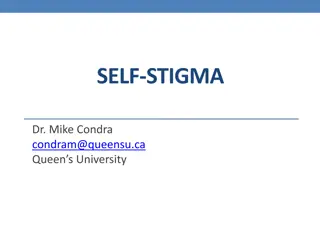Understanding Poverty and Deviance: Stigma and Perspectives
Poverty is not just a lack of material resources but also a social stigma, often associated with immorality and failure. The relationship between poverty and deviance is complex, with societal perceptions shaping the experiences of those in poverty. From blaming the poor for their situation to societal stigmatization, poverty carries both moral and material burdens. Key figures like Thomas Malthus and Max Weber have influenced how poverty is viewed in society. David Matza's perspective highlights the layers of disrepute within the impoverished population, shedding light on the various challenges faced by different groups.
Download Presentation

Please find below an Image/Link to download the presentation.
The content on the website is provided AS IS for your information and personal use only. It may not be sold, licensed, or shared on other websites without obtaining consent from the author. Download presentation by click this link. If you encounter any issues during the download, it is possible that the publisher has removed the file from their server.
E N D
Presentation Transcript
Chapter 4: Chapter 4: Poverty and Poverty and Disrepute Disrepute Book: Deviant Behavior, 12thEdition Author: Erich Goode
What is the relationship between poverty and deviance? What does poverty look like in the United States? Why is poverty considered shameful, disgraceful, even contemptible? What relationship does poverty have with other forms of deviance? Getting Started: Getting Started: Key Questions Key Questions
Poverty: A Cause or a Form of Deviance? Or Both? Poverty: A Cause or a Form of Deviance? Or Both? Poverty has both a relative and absolute dimension. The degree of poverty varies from one society to another, and hence, so does the stigma that adheres to it. Poverty is absolute because, among the poverty-stricken everywhere, illness and premature death are more common. Virtually everywhere, the well-off assume the poor to be less moral, less trustworthy, more likely to engage in criminal behavior.
Poverty carries with it a moral stain as vexing as material uncertainty itself. David Harvey For many, success implies virtue, and poverty implies failure. Failure is widely considered a sign of immorality. Poor people are typically blamed for their poverty, considered inferior, not only by the well-off but also by themselves. Poverty is stigmatized, shamed, despised. The homeless and impoverished are unwelcome in most affluent neighborhoods; they are discouraged from entering them. The Affluent The Affluent Stigmatize Stigmatize the Poor the Poor
Thomas Malthus Suggested the poor should starve to death as a means of population control. Max Weber Social strata adapt religious beliefs to their own socioeconomic needs. He referred to this tendency as elective affinity. Privileged classes adapt religious doctrines to pronounce that the poor are responsible for their poverty. And the poor interpret their poverty as the will of God, anticipating their reward in heaven. Perspectives Perspectives on Poverty on Poverty and Stigma: and Stigma: Malthus and Malthus and Weber Weber
David Matza argued that, while all poverty is disreputable, the poor consist of three layers, indicating degrees of disrepute. The most disreputable are those who refuse to work, are disaffiliated, remain on the margins of society by choice, and cause the most problems for the society, including crime and delinquency, mental illness, and are content to live a life of squalor, demoralization, and pauperization. Perspectives Perspectives on Poverty on Poverty and Stigma: and Stigma: David Matza David Matza
Contemporary Contemporary Perspectives Perspectives on Poverty and on Poverty and Stigma. Stigma.
Poverty in the United States America s income distribution is the most inequitably distributed among the dozen most industrialized nations of the world (GINI .480 in 2019) and it is becoming more maldistributed over time. The median American income decreasing. The wealthiest Americans are becoming increasingly wealthy. The nation s poorest regions also rank among the lowest in education.
Poverty in the United States: Recent Changes Poverty, as defined by the U.S. Government, means lacking the resources to meet basic nutritional needs for healthy living. 2016: Federal poverty threshold: 2-person household: $16,151 4-person household: $24,339 The poorest cities are in the Midwest Rustbelt. Rural poverty is especially pronounced.
Unemployment Unemployment
Welfare Welfare The higher social strata consider welfare recipients lazy, and undeserving poor. To receive welfare, poor people endure rituals of degradation. Related types of stigma: internalization, or the belief among the poor that they deserve to be stigmatized. anticipation of future stigma and hence, a low image of themselves.
Begging combines indignity of admitting to being impoverished with humiliating oneself by abjectly asking someone else for small sums of money." The Indignity of The Indignity of Begging Begging
Short-term homelessness is both widespread and commonplace. Homelessness Homelessness Long-term homeless tend to be more common among men - many previously incarcerated, with relatively low educational attainment, significant mental health issues, and drug use problems. NIMBY, or not in my back yard, is the mentality that seeks to keep deviant, undesirable people out of a given community.
Poverty and Poverty and Health Health
Poverty and Race in the United States Poverty and Race in the United States Compounded deprivation is the aggregative impact of racism, being poverty-stricken, living in a poor neighborhood, etc. Racism exacerbates the corrosive impact of poverty. African Americans and Latinos are more likely to live in predominantly poor neighborhoods than whites Mental health and well-being are negatively impacted. Economic advancement for African Americans generally does not reduce prejudice.
Summary Summary



